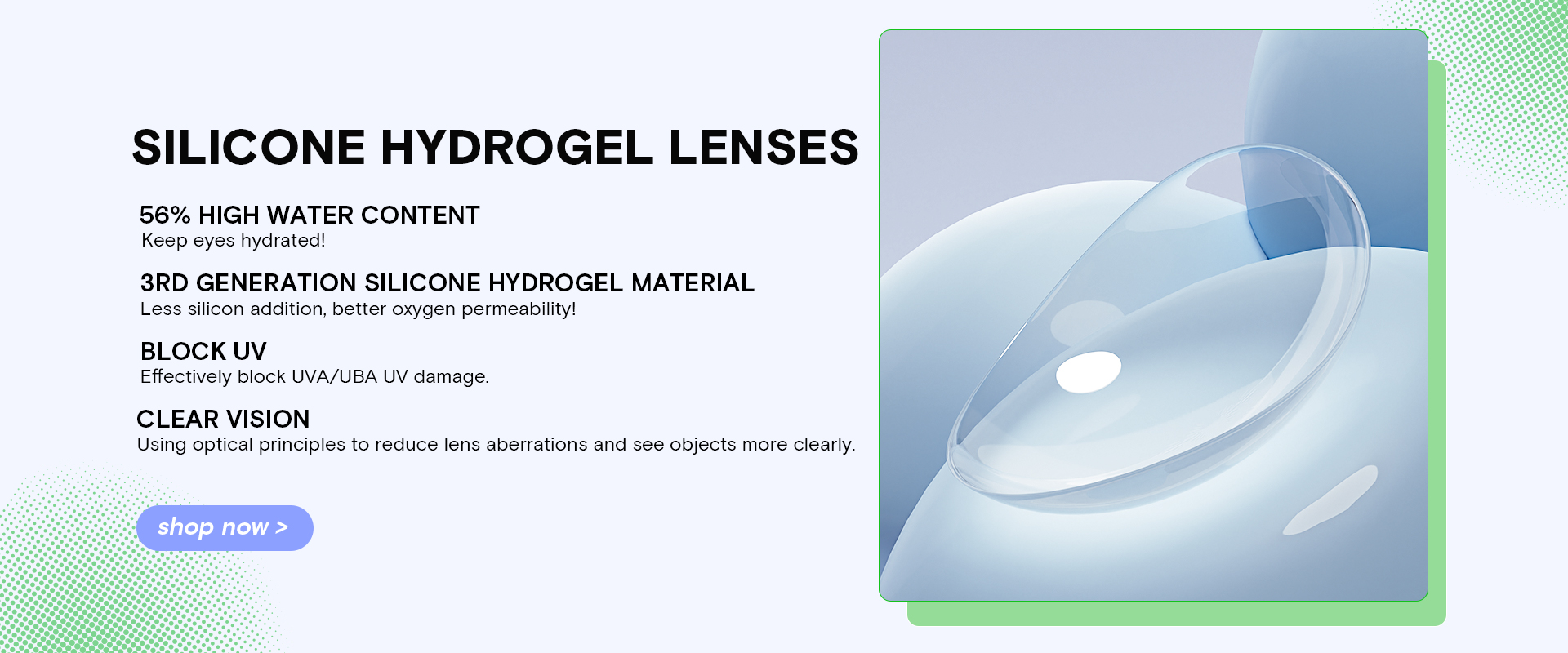How to choose the right colored contacts for your eyes?
Do you know how to choose the best contacts for your eyes after using contacts for so long? Check out our list of recommendations for contacts if you need some help choosing them.

Q1: What kinds of colored contacts are appropriate for dark eyes?
Opaque contact lenses are ideal if you have dark eyes. Try light brown or hazel colored contacts to look more natural. (Recommendations: Flores Brown and Gummy Bear Brown)
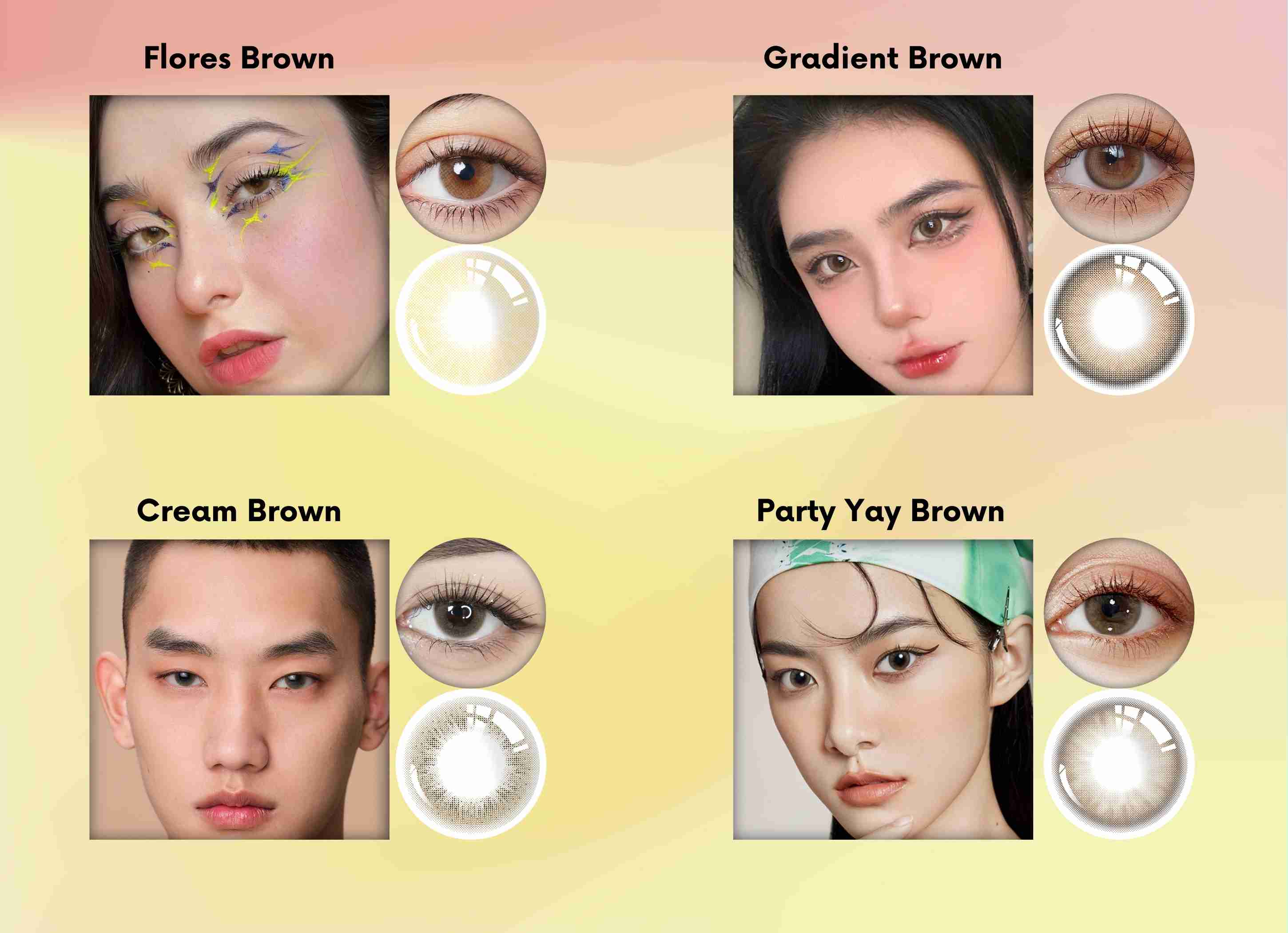
If you want to stand out from the crowd, then choose contact lenses in a more vibrant color. Blue, green, conspicuous gray, or pink or purple will do. (Suggested Colors: Agate Blue, Kiwi Green, Medusa Eyes Grey, Secret Love Blue, and Demon Purple) Bright, striking lenses might offer you a new look if you have a dark skin tone. (Suggested Colors: Yay Beach Grey, Peacock Feather Blue)

Q2: What kind of contacts are suitable for light eyes?
If you want to change your appearance in a subtle way, a pupil with an outer ring is the best option for you. It deepens the color of your natural pupil and defines the margins of your iris. For example, Currant Brown and Tipsy Mint Green colored contact lenses.

Gray lenses or light yellow-green lenses are options if you want to alter the color of your pupil while maintaining a natural appearance. If your pupil color is light blue, you can try Iris Grey, Jelly Grey, or Forest Green in addition to the colors mentioned above.
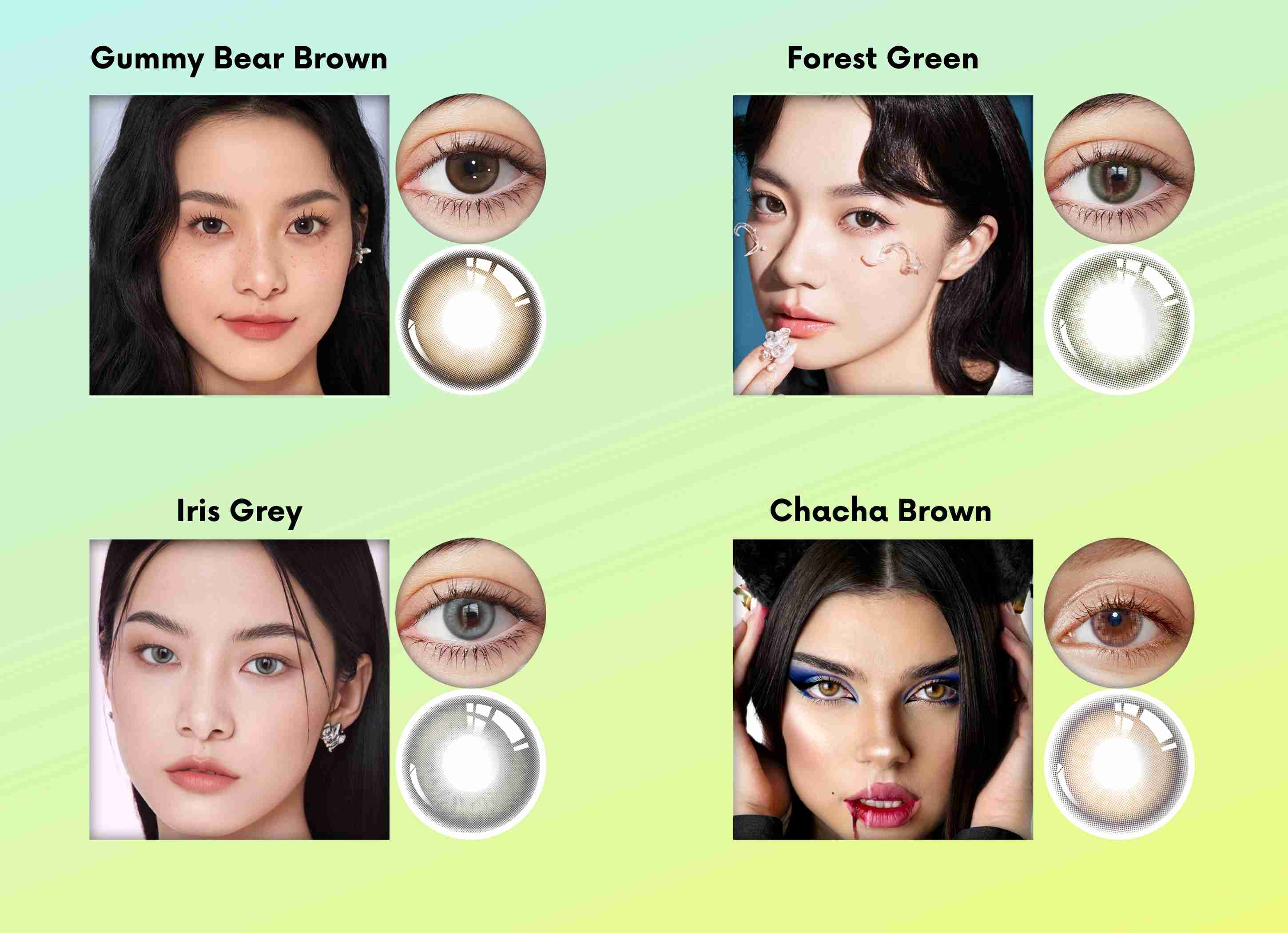
If you want a stunning new look that everyone will notice first and have light pupils and cool-toned skin, then you can choose lenses that lean a little warmer, like brown. Flores Brown Contacts is a wonderful option.
Q3: What kind of material is suitable for your eyes?
On the market, there are three main types of contact materials.
NO.1 Hydrogel
This is the lightest, softest and easiest material to wear. It is suitable for people who have good basic eye health and are not sensitive.
NO.2 Non-ionic
Non-ionic materials are used in the majority of contacts. People with sensitive eyes can use this type of material. If your eyes are teary, or prone to foreign body sensations, then it is recommended that you choose non-ionic materials.
NO.3 Silicone Hydrogel
Due to the silicon that has been added to the lenses, silicone hydrogel lenses are hard. They are appropriate for people who need to wear them for a long time and whose eyes are prone to dryness and fatigue but are not sensitive. This type of material is also suitable for most people who need to wear invisible lenses.
Q4. Does the higher the water content, the more moist it is?
The water content of regular contacts ranges from 38% to 58%.
Low water content: <50%
High water content: >50%
If your eyes are prone to dryness, it is recommended that you choose a lens with a low water content to reduce water evaporation. This is because high water content lenses tend to lose water and can aggravate dry eye symptoms.
If you do not have problems with your eyes or are sensitive, it is recommended that you choose lenses with a higher water content and a higher degree of softness. Wearing should also be careful to keep your eyes moist.

Recommended Water Content
42%: Long time wear users, dry eyes, students, office workers.
58%: Short wearing time, higher softness, more tears, sensitive eyes.
Q5. How do I choose contacts with different diameters, base curves and colors?
Colored Contacts come in lens diameters and graphic diameters. You should choose your contacts based on the size of your eyes, etc. Lenses that are too large tend to rub against the cornea, causing a foreign body sensation. The size of the graphic diameter determines the magnification effect of the lens on the eye.
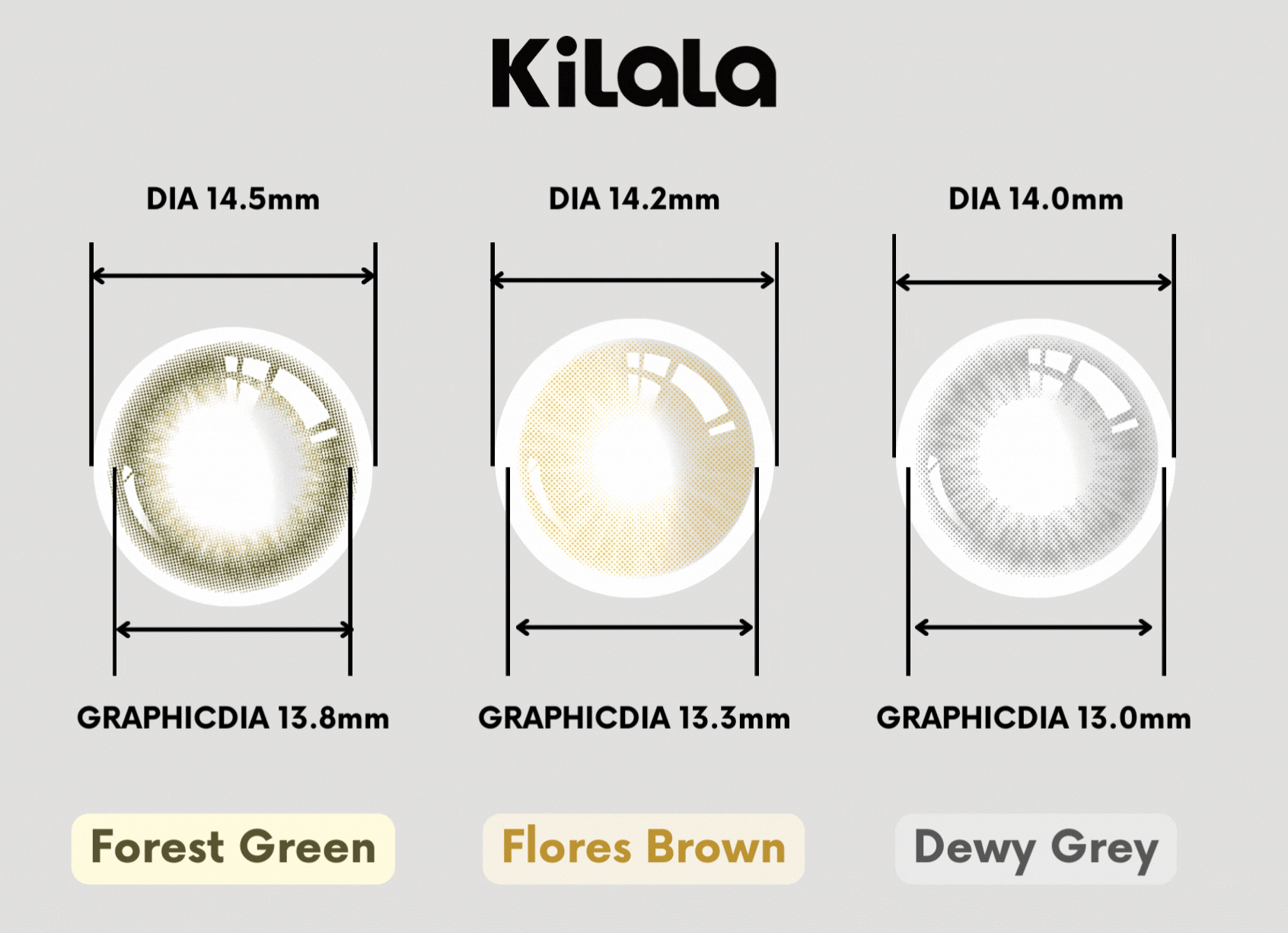
Recommended diameter:
For small eyes: 13.8mm~14.0mm
For normal eyes: 14.0mm~14.2mm
For big eyes: 14.2mm~14.5mm
How do I know whether the graphic diameter is large or small?
Small: ≤13.2mm. For everyday, more natural.
Medium: 13.3mm~13.6mm. Dilation effect.
Large: ≥13.8mm. Suitable for makeup look.
Base Curve: The base curve refers to the curvature of the lens. The larger the base curve, the easier it is to slip the lens, and the smaller it is, the easier it is to hurt your eyes. If you don't know what your base curve is, go to an optometry center to check or consult your eye doctor.
Q6: What are the differences between the different frequencies?
In terms of health and safety, the shorter the replacement, the safer it is, and the more challenging it is to care for the longer replacement. You can select the appropriate lenses for your needs.
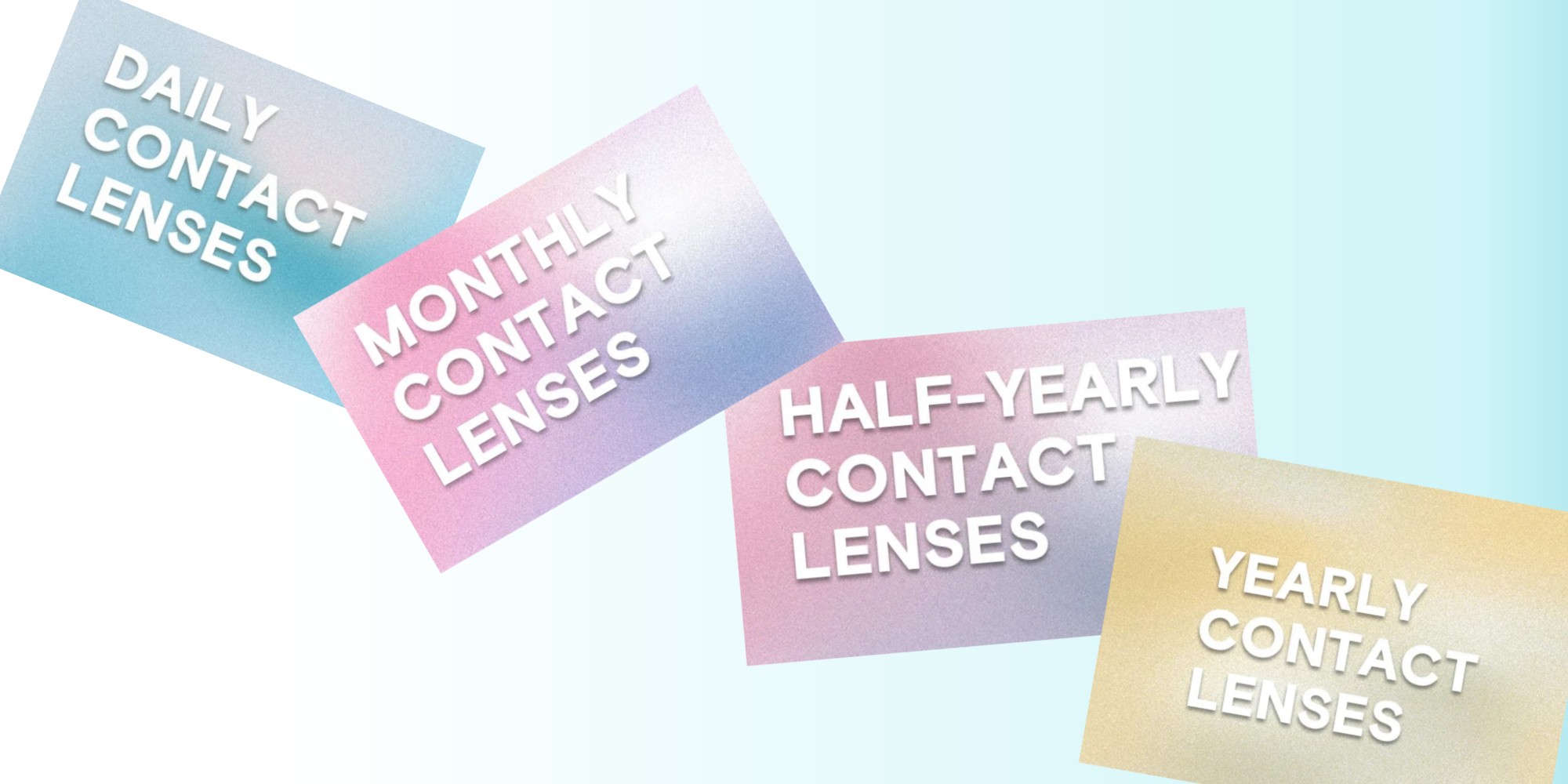
Daily Disposable: Change everyday. They are suitable for people with sensitive eyes. The price is relatively expensive.
Monthly: The use cycle is about 20 days. You need to wear them after 8 hours of soaking in the care solution in advance. After use, you need to clean it with care solution in time.
Half-Yearly: About 5 months of use. Need to soak in the care solution 8 hours in advance and then wear it. It also needs to be cleaned in time after use.
Yearly Disposable: The use cycle is recommended for 8-10 months. It is recommended to clean and soak the lenses one night before use to improve wearing comfort. It is necessary to change the lens case and clean the lenses frequently.
Q7. How do I select the right prescription?
Prescriptions for glasses and contacts do not match, so you will need to choose by converting them.
Prescriptions below -4.00 do not need to be converted.
Using the table below, you can adjust your contacts to meet your prescription.
| -4.00 TO -6.50 Degree | -7.00 TO -10.00 Degree | ||
| Frame Glass Degree | Contact Lenses Degree | Frame Glass Degree | Contact Lenses Degree |
| -4.00 | -3.75 | -7.00 | -6.50 |
| -4.25 | -4.00 | -7.50 | -6.75 |
| -4.50 | -4.25 | -8.00 | -7.25 |
| -4.75 | -4.50 | -8.50 | -7.75 |
| -5.00 | -4.75 | -9.00 | -8.00 |
| -5.25 | -5.00 | -9.50 | -8.50 |
| -5.50 | -5.00 | -10.00 | -8.75 |
| -5.75 | -5.25 | ||
| -6.00 | -5.50 | ||
| -6.50 | -6.00 | ||
